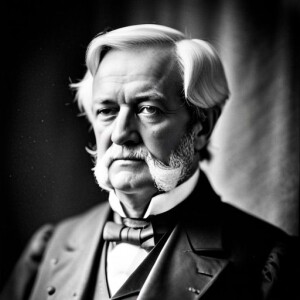Get ready to be transported back in time to learn about the life and legacy of Millard Fillmore, the 13th president of the United States! Born in a humble log cabin in New York, Fillmore was the son of a farmer and was largely self-taught. Despite his humble beginnings, he became a teacher before studying law and eventually becoming a lawyer in 1823.
But that wasn’t enough for Fillmore – he was involved in politics from an early age and was elected to the New York State Assembly in 1829. He went on to serve in the U.S. House of Representatives from 1833 to 1843, where he became known for his strong stance against slavery.
In 1849, Fillmore became vice president under Zachary Taylor and took over as president upon Taylor’s untimely death in 1850. During his presidency, Fillmore supported the Compromise of 1850, which aimed to settle disputes between slave and free states. This included the admission of California as a free state and the controversial Fugitive Slave Act, which required the return of runaway slaves to their owners.
Despite his efforts to delay the outbreak of the Civil War, Fillmore’s presidency was mired in controversy and he was not nominated for re-election in 1852. However, he didn’t let that stop him from continuing to serve the public. He spent the rest of his life working on various philanthropic projects, including the establishment of the University at Buffalo, which later became the State University of New York at Buffalo.
Fillmore’s legacy is complicated, but his commitment to education and philanthropy continue to inspire Americans to this day. So take a moment to appreciate the life and contributions of Millard Fillmore, a man who played an important role in the tumultuous period leading up to the Civil War and whose impact still resonates today.

